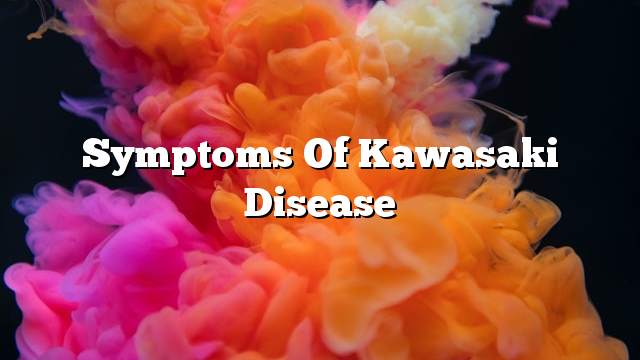Symptoms of Kawasaki disease
Kawasaki disease is an idiopathic disease especially affecting children, an inflammation of the medium and small blood vessels, especially the coronary heart, which is also called lymphatic lymph node syndrome; it also affects the lymph nodes, skin and mucous membranes inside the mouth, nose and throat. The clinical features of Kawasaki disease vary over time, divided into three stages: acute, sub-acute, and convalescence, and in some add a fourth stage called chronic, and we will provide a detailed explanation of the symptoms at each stage respectively.
Symptoms of acute phase
The temperature is more than or equal to 39 degrees Celsius, sometimes more than 40 degrees Celsius, and the high temperature lasts for 4-5 days. If not treated, it extends to 4 weeks (11 days in average) , But with the use of appropriate treatments the heat decreases within two days, and is associated with some of these symptoms:
- The patient suffers from inflammation of the conjunctiva where the eye is red, with no secretions of the eye, and the inflammation is painless and does not affect the eyes in the long term.
- The patient suffers from a change in the size of the limbs especially the feet where they sneeze with redness and pain when the doctor examined clinically.
- Change in the tongue and mouth where the tongue becomes pink and called the tongue strawberry, and also occur cracks and bleeding and dry lips.
- Redness and irritation of the skin around the anus.
- Tension of the patient and his sense of discomfort and frenzy.
- Problems in the urinary system, digestive and liver as well.
- When the neck is examined, the swelling of the lymph nodes is present. The swelling is often painless and on one side and at the front of the neck and is more than 1.5 centimeter.
- Inflammation of the heart muscle and the surrounding circumference of the heart.
- During five days of heat there is a rash, characterized by a rash that affects the trunk and limbs, and this rash is a bumpy and called a rash of polymorphism.
Symptoms of the sub-acute phase
The acute phase begins when the fever subsides and lasts until the fourth to sixth week. The distinguishing features of this stage are the skin flaking around the toes and hands, the number of blood platelets that may exceed 1 million μl, and the onset of coronary angiography, so the risk of sudden death is Top at this stage.
Other symptoms of this stage are constant irritability, loss of appetite, congenital congestion, joint pain, vomiting with diarrhea, and persistent fever beyond three weeks may be a bad indicator of the disease called Kawasaki disease, because the persistence of heat causes a greater risk to the patient because it increases heart complications .,
Symptoms of convalescent stage
This stage is characterized by the disappearance of all clinical symptoms of the disease, usually within three months of the disease, but at this stage the laboratory tests begin to return to readings similar to the readings recorded at the beginning of the disease, for example: sedimentation rate (ESR), and C interactive protein return to the rise .
During this phase, cardiac malformations may persist. Small, dilated coronary arteries tend to return to normal on their own (60% of cases), but large blood vessels may expand, and myocardial infarction can occur at this stage.
Symptoms of chronic stage
This stage is of the most important for patients who developed heart complications, and continue for the rest of the age because the extensions in blood vessels formed in childhood, may rupture in adulthood or beyond, and in some rare cases may suffer from temporary hearing loss and paralysis in the facial nerve VII, or water on the lung, the patient may also suffer from jaundice, diarrhea, vomiting, abdominal pain, joint pain, swelling of the testes and redness in the place of injectable tuberculosis.
